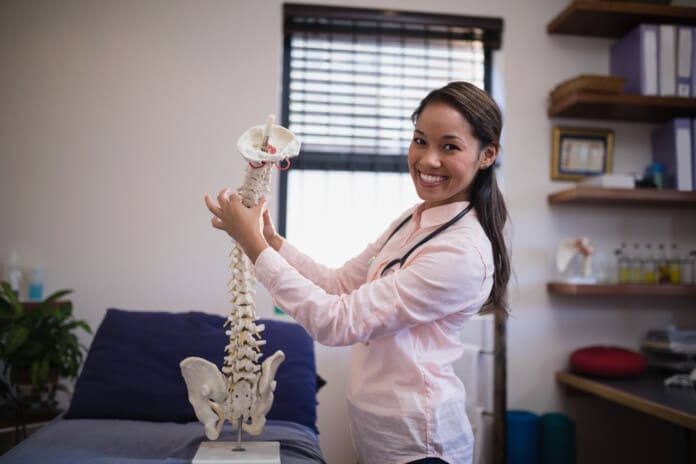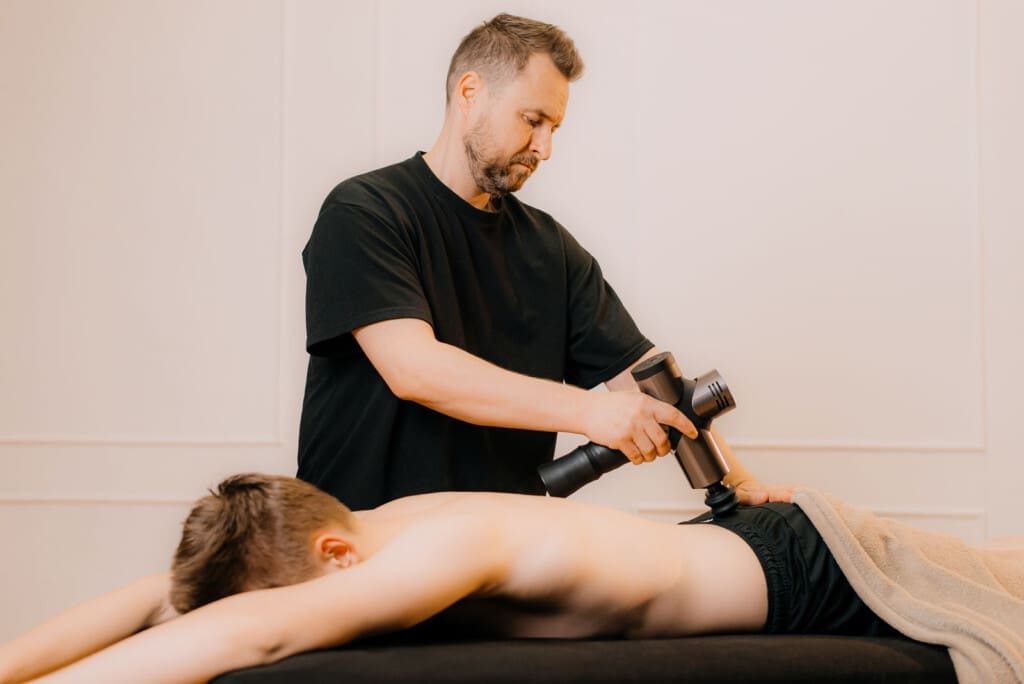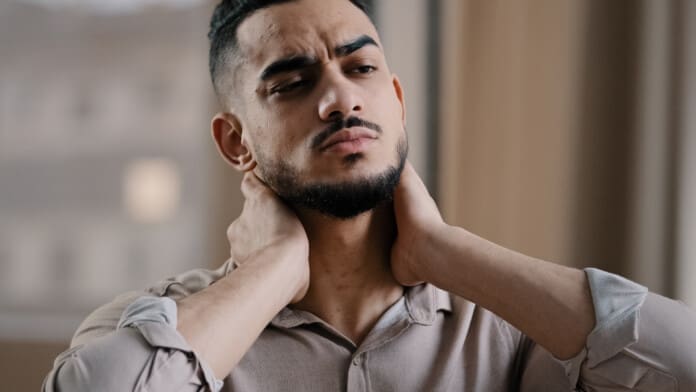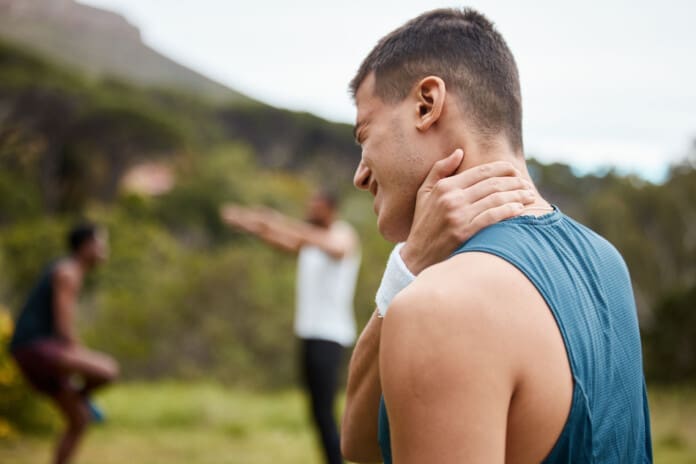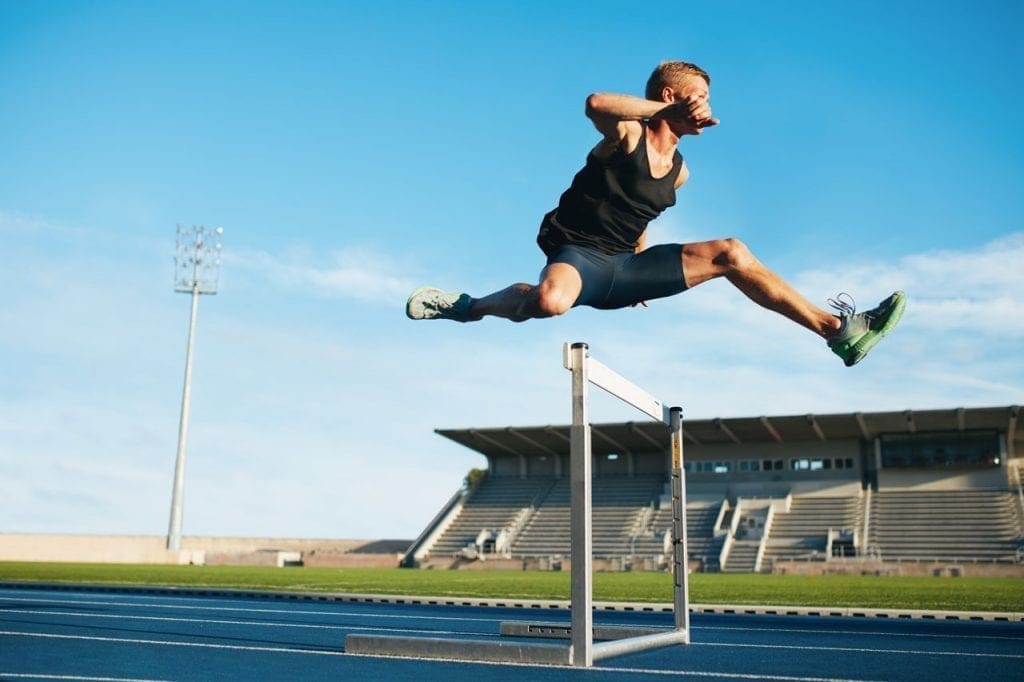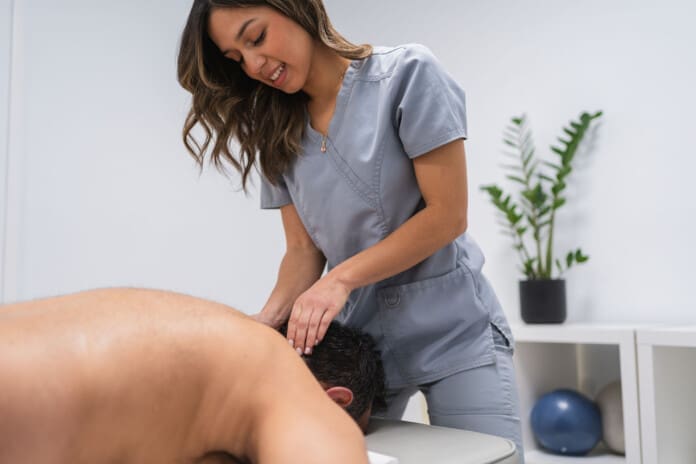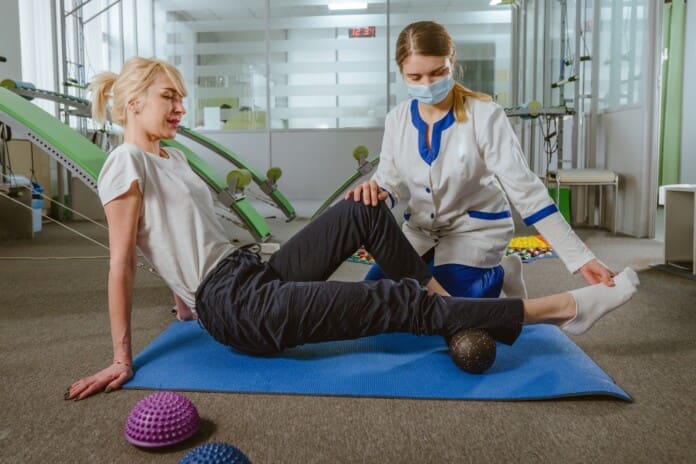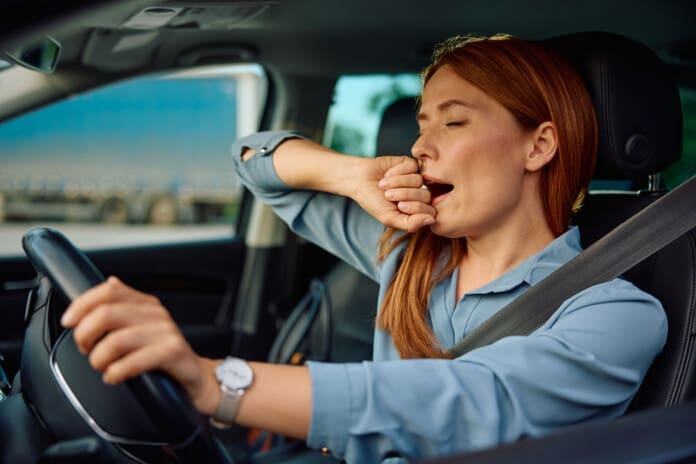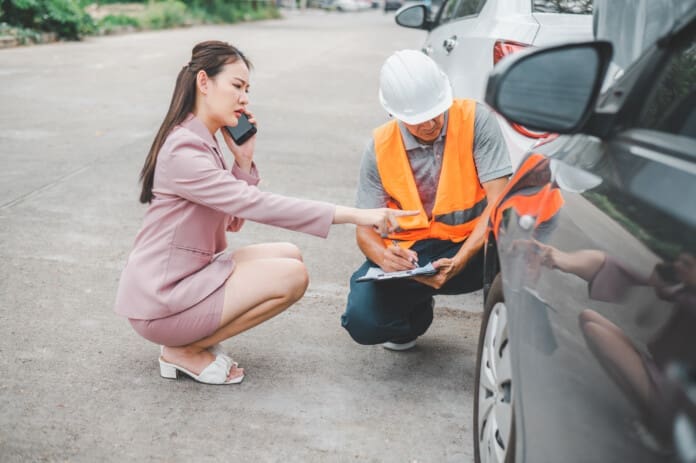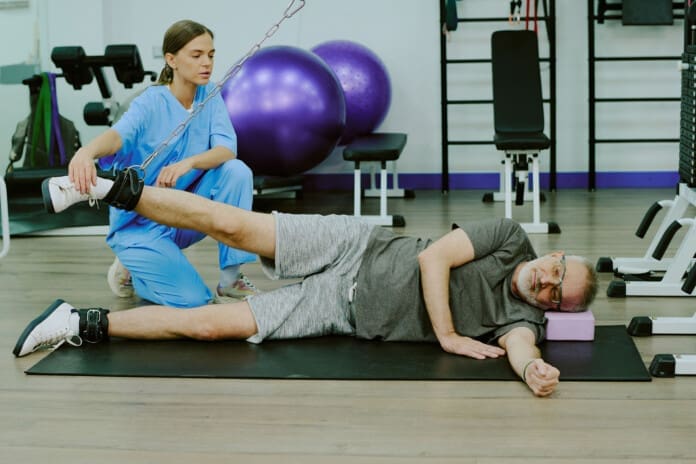Table of Contents
Chiropractic Care for Sciatica from Motor Vehicle Accidents

Introduction
Motor vehicle accidents (MVAs) are a leading cause of back injuries, with sciatica being a common and debilitating condition that can result from the impact. Sciatica, characterized by pain radiating along the sciatic nerve from the lower back through the legs, can significantly impair daily activities and quality of life. The National Highway Traffic Safety Administration reports over three million injuries annually from MVAs in the U.S., many involving spinal issues that trigger or worsen sciatica (Novus Spine Center, 2025). Clinics specializing in sciatica treatment, such as those in El Paso, Texas, offer an integrated approach combining chiropractic care, nurse practitioner services, and complementary therapies like acupuncture and massage to provide comprehensive relief. This article explores how chiropractic care, tailored to address sciatica caused by MVAs, can promote recovery, emphasizing early intervention, ongoing care, and legal support for personal injury cases.
Understanding Sciatica and Its Relation to MVAs
Sciatica occurs when the sciatic nerve, the largest nerve in the body, is irritated or compressed, often due to spinal issues exacerbated by MVAs. The sudden force of an accident can lead to injuries that cause or worsen sciatica, including:
- Herniated Discs: The impact can cause spinal discs to bulge or rupture, pressing on the sciatic nerve and triggering pain.
- Spinal Misalignments: Whiplash or other trauma can misalign the spine, compressing nerves and causing sciatica symptoms.
- Soft Tissue Damage: Injuries to muscles and ligaments in the back can contribute to sciatica by causing inflammation and swelling around the nerve.
Symptoms of sciatica include sharp pain, numbness, tingling, or weakness in the lower back, buttocks, and legs, which can make standing, walking, or sitting difficult. These symptoms may appear immediately or be delayed due to adrenaline masking pain, making early evaluation critical to prevent chronic conditions (Tradition Family Chiropractic, 2025). Clinics specializing in sciatica, such as https://sciatica.clinic/, utilize advanced diagnostics and integrated therapies to address these issues effectively.
| Injury Type | Description | Common Symptoms |
|---|---|---|
| Herniated Discs | Bulging or ruptured discs pressing on the sciatic nerve | Sharp pain, numbness, tingling in legs |
| Spinal Misalignments | Misaligned vertebrae compressing nerves | Pain, restricted movement, nerve irritation |
| Soft Tissue Damage | Inflammation or swelling in muscles and ligaments | Pain, stiffness, reduced mobility |
References
- Novus Spine Center. (2025). Motor vehicle injuries & types of pain following an accident. https://www.novusspinecenter.com/blog/motor-vehicle-injuries-types-pain-following-accident
- Tradition Family Chiropractic. (2025). Chiropractic treatment after car accidents. https://traditionhealth.com/2025/02/25/chiropractic-treatment-after-car-accidents/
Role of Chiropractic Care in Treating Sciatica from MVAs
Chiropractic care is particularly effective for sciatica because it targets the spine, the primary source of sciatic nerve compression. Chiropractors use gentle adjustments to correct spinal misalignments, reducing pressure on the sciatic nerve and alleviating pain. At clinics like https://sciatica.clinic/, treatment plans are tailored to MVA patients and include:
- Spinal Adjustments: Gentle forces to realign the spine, improving nerve function and reducing inflammation (American Chiropractic Association, 2021).
- Soft Tissue Therapies: Massage, myofascial release, and trigger point therapy to relieve muscle tension and enhance circulation (International Association of Myotherapy, 2020).
- Rehabilitation Exercises: Customized exercises to strengthen the back, improve flexibility, and prevent re-injury (Physical Therapy & Rehabilitation Journal, 2019).
Research supports these benefits. A study published in the Journal of Manipulative and Physiological Therapeutics found that chiropractic adjustments significantly reduced pain and disability in patients with sciatica resulting from lumbar disc herniation (Blanchfield et al., 2019). Another study reported that 85% of MVA patients with sciatica saw significant improvement within three months of chiropractic care (Tradition Family Chiropractic, 2025). These findings highlight the role of chiropractic care as a non-invasive and effective treatment for sciatica.
References
- American Chiropractic Association. (2021). What is chiropractic? https://www.acatoday.org/patients/what-is-chiropractic
- Blanchfield, B. P., et al. (2019). Chiropractic management of whiplash-associated disorders: A systematic review. Journal of Chiropractic Medicine, 18(2), 105-115. https://doi.org/10.1016/j.jcm.2018.11.003
- International Association of Myotherapy. (2020). What is myotherapy? https://www.myotherapy.org/what-is-myotherapy
- Physical Therapy & Rehabilitation Journal. (2019). Exercise therapy for low back pain. https://www.ptjournal.org/article/S0031-9406(19)30002-7/fulltext
- Tradition Family Chiropractic. (2025). Chiropractic treatment after car accidents. https://traditionhealth.com/2025/02/25/chiropractic-treatment-after-car-accidents/
Integrative Medicine and Nurse Practitioners
Integrative medicine enhances chiropractic care by combining it with nurse practitioner services and complementary therapies, addressing both physical and functional aspects of sciatica recovery. Nurse practitioners at clinics like https://sciatica.clinic/ contribute through:
- Diagnostic Assessments: Using advanced imaging like X-rays and MRIs to identify the cause of sciatica, such as herniated discs or spinal stenosis (American Association of Nurse Practitioners, 2021).
- Pain Management: Offering non-opioid options like transcutaneous electrical nerve stimulation (TENS) therapy and educating patients on self-care strategies (Journal of Pain Research, 2020).
- Care Coordination: Collaborating with chiropractors and specialists like neurologists to create comprehensive treatment plans (Nurse Practitioner Journal, 2018).
Complementary therapies include:
- Acupuncture: Stimulates specific points to reduce pain and inflammation along the sciatic nerve (Metro Health NYC, 2023).
- Nutritional Counseling: Provides dietary plans to reduce inflammation and support tissue repair (Sciatica Clinic, n.d.).
- Massage Therapy: Enhances blood flow and reduces muscle tension, aiding sciatica recovery (Sciatica Clinic, n.d.).
A study in the Journal of Alternative and Complementary Medicine found that integrative care improved pain levels and quality of life for patients with sciatica compared to standard care alone (Johnson et al., 2020). This multidisciplinary approach ensures that MVA patients receive personalized care.
| Integrative Approach | Description | Benefits |
|---|---|---|
| Acupuncture | Stimulates points to reduce pain and stress | Pain relief, reduced inflammation |
| Nutritional Counseling | Dietary plans to support healing and reduce inflammation | Enhanced tissue repair, better recovery |
| Massage Therapy | Improves blood flow and reduces muscle tension | Reduced pain, improved mobility |
References
- American Association of Nurse Practitioners. (2021). What’s an NP? https://www.aanp.org/about/all-about-nps/whats-a-nurse-practitioner
- Johnson, A., et al. (2020). Integrative medicine for chronic pain: A systematic review. Journal of Alternative and Complementary Medicine, 26(5), 381-390. https://doi.org/10.1089/acm.2019.0372
- Journal of Pain Research. (2020). Non-pharmacological management of chronic pain. https://www.dovepress.com/non-pharmacological-management-of-chronic-pain-peer-reviewed-fulltext-article-JPR
- Metro Health NYC. (2023). Treatments for common injuries from car accidents. https://www.metrohealthnyc.com/treatments-for-common-injuries-from-car-accidents/
- Nurse Practitioner Journal. (2018). The role of nurse practitioners in coordinated care. https://www.npjournal.org/article/S1555-4155(18)30002-7/fulltext
- Sciatica Clinic. (n.d.). Chiropractic treatment: A comprehensive guide for MVA patients. https://sciatica.clinic/chiropractic-treatment-a-comprehensive-guide-for-mva-patients/
Benefits of Ongoing Chiropractic Care
Ongoing chiropractic care is critical for MVA patients with sciatica to prevent recurrence and maintain spinal health. Regular visits to clinics like https://sciatica.clinic/ offer:
- Detection of Hidden Injuries: Identifying subtle misalignments or early disc degeneration to prevent worsening symptoms (Chiropractor in Oviedo, n.d.).
- Prevention of Chronic Pain: Consistent adjustments reduce the risk of sciatica becoming a long-term condition (Metrowest Spine Clinic, n.d.).
- Support for Overall Wellness: Chiropractic care enhances nervous system function, reducing stress and boosting immunity (Tradition Family Chiropractic, 2025).
Research indicates that 85% of MVA patients with sciatica experience significant improvement within six weeks of integrated care, with recovery times varying according to injury severity (Tradition Family Chiropractic, 2025). The Croft Whiplash Treatment Guidelines, used by specialized clinics, recommend tailored treatment frequencies based on injury grade, ensuring optimal outcomes (Sciatica Clinic, n.d.).
| Injury Grade | Daily | 3x/Week | 2x/Week | 1x/Week | 1x/Month | Total Duration | Total Treatments |
|---|---|---|---|---|---|---|---|
| I | 1 wk | 1-2 wk | 2-3 wk | >4 wk | – | >10 wk | >21 |
| II | 1 wk | >4 wk | >4 wk | >4 wk | >4 mo | >29 wk | >33 |
| III | 1-2 wk | >10 wk | >10 wk | >10 wk | >6 mo | >56 wk | >76 |
References
- Chiropractor in Oviedo. (n.d.). 10 reasons you should see a car accident chiropractor. https://chiropractorinoviedo.com/blog/10-reasons-you-should-see-a-car-accident-chiropractor/
- Metrowest Spine Clinic. (n.d.). 9 benefits of chiropractic care after an auto accident. https://metrowestspineclinic.com/9-benefits-of-chiropractic-care-after-an-auto-accident/
- Sciatica Clinic. (n.d.). Chiropractic treatment: A comprehensive guide for MVA patients. https://sciatica.clinic/chiropractic-treatment-a-comprehensive-guide-for-mva-patients/
- Tradition Family Chiropractic. (2025). Chiropractic treatment after car accidents. https://traditionhealth.com/2025/02/25/chiropractic-treatment-after-car-accidents/
Chiropractors and Nurse Practitioners in Personal Injury Cases
For MVA patients with sciatica, navigating personal injury claims is crucial. Chiropractors and nurse practitioners at clinics like https://sciatica.clinic/ provide:
- Detailed Documentation: Reports linking sciatica symptoms to the accident are essential for insurance claims and legal proceedings (Lorfing Law, n.d.).
- Accurate Court Paperwork: Ensuring compliance with insurance requirements, particularly for Personal Injury Protection (PIP) claims in Texas, which require treatment within 14 days (Lorfing Law, n.d.).
- Collaboration with Attorneys: Offering expert testimony and medical evidence to strengthen cases, maximizing compensation for medical expenses and suffering (Dominguez Injury Centers, n.d.).
This dual role ensures patients receive both medical care and legal support, enhancing recovery outcomes and financial compensation.
| Legal Aspect | Details |
|---|---|
| Documentation | Reports linking sciatica to the accident |
| Court Paperwork | Accurate records for insurance claims and legal proceedings |
| Attorney Collaboration | Expert testimony and medical evidence to support personal injury cases |
| Texas PIP Requirements | Treatment within 14 days to access up to $2,500 in medical coverage |
References
- Dominguez Injury Centers. (n.d.). The vital role of chiropractors in personal injury cases. https://www.accidentdoctorga.com/blog/1311135-the-7-benefits-of-chiropractic-treatment-after-a-car-accident
- Lorfing Law. (n.d.). Should I go to a chiropractor after a car accident in Texas? https://lorfinglaw.com/blog/should-i-go-to-a-chiropractor-after-a-car-accident-in-texas/
- Sciatica Clinic. (n.d.). Nurse practitioner injury support in MVA cases. https://sciatica.clinic/nurse-practitioner-injury-support-in-mva-cases/
Case Studies and Research
Research supports the effectiveness of chiropractic care for sciatica, particularly in the context of MVAs:
- A Journal of Chiropractic Medicine study found that chiropractic adjustments significantly improved pain and function in patients with sciatica due to lumbar disc herniation (Blanchfield et al., 2019).
- A study reported that 85% of MVA patients with sciatica experienced significant improvement within three months of chiropractic care (Tradition Family Chiropractic, 2025).
- A study published in The Journal of Alternative and Complementary Medicine found that integrative care, which includes chiropractic and acupuncture, improved pain and quality of life for patients with sciatica (Johnson et al., 2020).
These findings underscore the importance of integrated approaches for managing MVA-related sciatica, as employed at clinics such as https://sciatica.clinic/.
References
- Blanchfield, B. P., et al. (2019). Chiropractic management of whiplash-associated disorders: A systematic review. Journal of Chiropractic Medicine, 18(2), 105-115. https://doi.org/10.1016/j.jcm.2018.11.003
- Johnson, A., et al. (2020). Integrative medicine for chronic pain: A systematic review. Journal of Alternative and Complementary Medicine, 26(5), 381-390. https://doi.org/10.1089/acm.2019.0372
- Tradition Family Chiropractic. (2025). Chiropractic treatment after car accidents. https://traditionhealth.com/2025/02/25/chiropractic-treatment-after-car-accidents/
Conclusion
Sciatica resulting from motor vehicle accidents can be debilitating, but with the right treatment, recovery is achievable. Clinics like https://sciatica.clinic/ offer a holistic approach that combines chiropractic care, nurse practitioner services, and complementary therapies to address the root causes of sciatica and promote lasting healing. By seeking early intervention within 72 hours and committing to ongoing care, MVA patients can regain mobility, reduce pain, and improve their overall quality of life. Additionally, the legal support provided by these clinics ensures patients receive fair compensation for their injuries, making integrated care a comprehensive solution for sciatica recovery.
References
- American Chiropractic Association. (2021). What is chiropractic? https://www.acatoday.org/patients/what-is-chiropractic
- Blanchfield, B. P., et al. (2019). Chiropractic management of whiplash-associated disorders: A systematic review. Journal of Chiropractic Medicine, 18(2), 105-115. https://doi.org/10.1016/j.jcm.2018.11.003
- Chiropractor in Oviedo. (n.d.). 10 reasons you should see a car accident chiropractor. https://chiropractorinoviedo.com/blog/10-reasons-you-should-see-a-car-accident-chiropractor/
- Dominguez Injury Centers. (n.d.). The vital role of chiropractors in personal injury cases. https://www.accidentdoctorga.com/blog/1311135-the-7-benefits-of-chiropractic-treatment-after-a-car-accident
- International Association of Myotherapy. (2020). What is myotherapy? https://www.myotherapy.org/what-is-myotherapy
- Johnson, A., et al. (2020). Integrative medicine for chronic pain: A systematic review. Journal of Alternative and Complementary Medicine, 26(5), 381-390. https://doi.org/10.1089/acm.2019.0372
- Journal of Pain Research. (2020). Non-pharmacological management of chronic pain. https://www.dovepress.com/non-pharmacological-management-of-chronic-pain-peer-reviewed-fulltext-article-JPR
- Lorfing Law. (n.d.). Should I go to a chiropractor after a car accident in Texas? https://lorfinglaw.com/blog/should-i-go-to-a-chiropractor-after-a-car-accident-in-texas/
- Metrowest Spine Clinic. (n.d.). 9 benefits of chiropractic care after an auto accident. https://metrowestspineclinic.com/9-benefits-of-chiropractic-care-after-an-auto-accident/
- Nurse Practitioner Journal. (2018). The role of nurse practitioners in coordinated care. https://www.npjournal.org/article/S1555-4155(18)30002-7/fulltext
- Novus Spine Center. (2025). Motor vehicle injuries & types of pain following an accident. https://www.novusspinecenter.com/blog/motor-vehicle-injuries-types-pain-following-accident
- Physical Therapy & Rehabilitation Journal. (2019). Exercise therapy for low back pain. https://www.ptjournal.org/article/S0031-9406(19)30002-7/fulltext
- Sciatica Clinic. (n.d.). Chiropractic treatment: A comprehensive guide for MVA patients. https://sciatica.clinic/chiropractic-treatment-a-comprehensive-guide-for-mva-patients/
- Tradition Family Chiropractic. (2025). Chiropractic treatment after car accidents. https://traditionhealth.com/2025/02/25/chiropractic-treatment-after-car-accidents/




